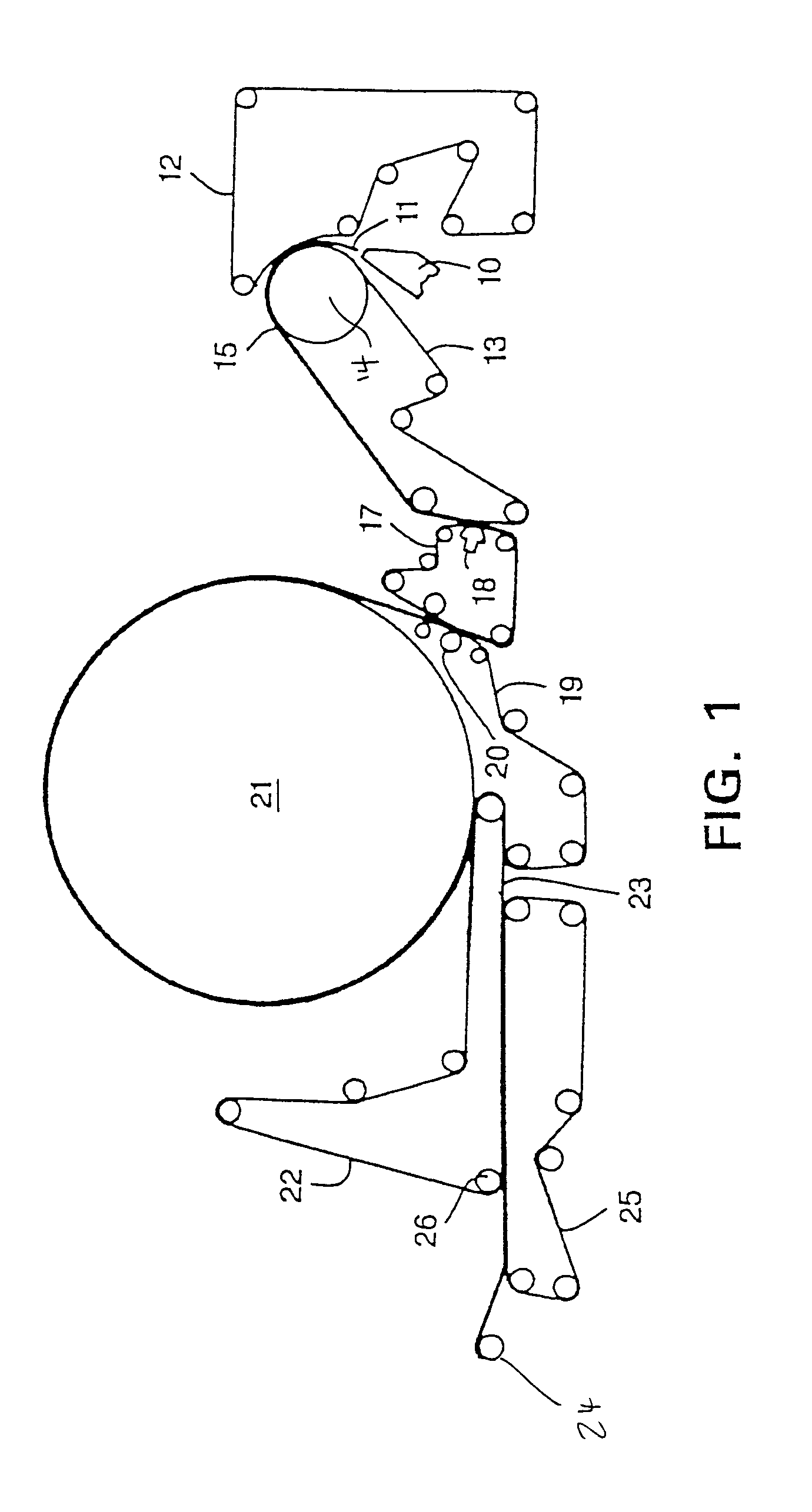Tissue products having increased absorbency
a technology of absorbency and tissue products, which is applied in the directions of non-fibrous pulp addition, transportation and packaging, paper-making, etc., can solve the problems of insufficient absorbency of portions of paper webs, insufficient distribution of superabsorbent materials throughout the paper web, etc., to increase the strength of tissue products, and reduce the number of fiber-crossover points
- Summary
- Abstract
- Description
- Claims
- Application Information
AI Technical Summary
Benefits of technology
Problems solved by technology
Method used
Image
Examples
example 1
[0055]The ability to form a tissue with a superabsorbent material was demonstrated. Initially, a liquid suspension of pulp fibers (“Longlac-19”) was dispersed using a British Disintegrator to form a liquid suspension.
[0056]Thereafter, a dry, superabsorbent material (Oasis 101 from Technical Absorbents) was then added to the suspension such that the resulting fiber furnish contained 95% pulp fibers and 5% superabsorbent material.
[0057]After forming the furnish, a paper web having a basis weight of 14 grams per square meter was formed using a TAPPI handsheet mold and conventional web-forming techniques, such as described above. Once the web was formed, it was then placed onto a stainless steel screen and dried in a convection oven at 105° C. After drying, the formed web was then removed from the dryer and examined. It was subjectively determined that the superabsorbent material was retained within the dried web.
example 2
[0058]The ability to form a tissue with a superabsorbent material was demonstrated. Initially, pulp fibers (“Longlac-19”) and superabsorbent material (Oasis 101 from Technical Absorbents) were mixed and dispersed using a British Disintegrator to form a liquid suspension containing 95% pulp fibers and 5% superabsorbent material.
[0059]After forming the furnish, a paper web having a basis weight of 14 grams per square meter was formed using a TAPPI handsheet mold and conventional web-forming techniques, such as described above. Once the web was formed, it was then placed onto a stainless steel screen and dried in a convection oven at 105° C. After drying, the formed web was then removed from the dryer and examined. It was subjectively determined that the superabsorbent material was retained within the dried web.
example 3
[0060]The ability to form a tissue with a superabsorbent material was demonstrated. Initially, a liquid suspension of pulp fibers (“Longlac-19”) was dispersed using a British Disintegrator to form a liquid suspension. Thereafter, a dry, superabsorbent material (Oasis 101 from Technical Absorbents) was then applied to the suspension such that the resulting fiber furnish contained 95% pulp fibers and 5% superabsorbent material.
[0061]After forming the furnish, a paper web having a basis weight of 40 grams per square meter was formed using a TAPPI handsheet mold and conventional web-forming techniques, such as described above. Once the web was formed, it was then placed onto a stainless steel screen and dried in a convection oven at 105° C. After drying, the formed web was then removed from the dryer and examined. It was subjectively determined that the superabsorbent material was retained within the dried web.
PUM
| Property | Measurement | Unit |
|---|---|---|
| Fraction | aaaaa | aaaaa |
| Fraction | aaaaa | aaaaa |
| Fraction | aaaaa | aaaaa |
Abstract
Description
Claims
Application Information
 Login to View More
Login to View More - R&D
- Intellectual Property
- Life Sciences
- Materials
- Tech Scout
- Unparalleled Data Quality
- Higher Quality Content
- 60% Fewer Hallucinations
Browse by: Latest US Patents, China's latest patents, Technical Efficacy Thesaurus, Application Domain, Technology Topic, Popular Technical Reports.
© 2025 PatSnap. All rights reserved.Legal|Privacy policy|Modern Slavery Act Transparency Statement|Sitemap|About US| Contact US: help@patsnap.com

